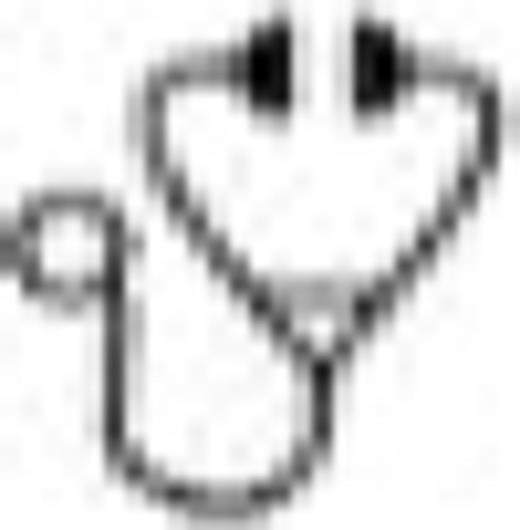Abstract

Despite being developed in eras when standard treatments for Chronic Phase Chronic Myeloid Leukemia (CP-CML) differ, Sokal, Hasford, and European Treatment and Outcome Study (EUTOS) scores each remain in use for predicting survival outcomes. The European LeukemiaNet (ELN) 2013 guidelines state that no one score is superior to the other. Furthermore, no studies have examined how a combination of scores may improve prognostic value. This retrospective, multicenter study compared the scores, individually and in combination, on predicting Overall Survival (OS), Progression-Free Survival (PFS) and Event-Free Survival (EFS) for CP-CML patients in Singapore General Hospital (Singapore), Seoul St. Mary's Hospital (South Korea) and Chang Gung Memorial Hospital (Taiwan).
A total of 1222 newly diagnosed CP-CML patients (2013 ELN criteria) between July 1998 to December 2013 with follow-up period ≥18 months were reviewed. OS was defined as death from any cause, PFS was defined as transformation to accelerated or blastic phase and CML-related death. EFS was defined as failure according to the 2009 ELN criteria, treatment changes, progression, and death. Log likelihood ratio (LR) test of nested models was performed to compare dual combination scores with its individual components. Adequacy index was used to quantify the percentage of variation explained by each pair of scores. Harrell's c-index was also calculated to evaluate the predictive ability of the scores. Linear contrast test was used to further stratify the individual risk groups in dual combination scores.
For OS, comparison of Sokal + EUTOS vs. EUTOS (LR 40.44 vs. 0.49) or Sokal + Hasford vs. Hasford (LR 31.78 vs. 11.81) showed that the combined model was significantly better than the individual models alone (p-value<0.01 for both). However, comparison of Sokal + EUTOS vs. Sokal or Sokal + Hasford vs. Sokal was not significantly better. Comparison of Hasford + EUTOS vs. EUTOS was significantly better (LR 21.37 vs. 0.92, p-value<0.01). Thus, for OS, the predictive ability order of the models are Sokal>Hasford>EUTOS, which are supported by Harrell's c-indices of 0.665, 0.591, 0.514, respectively. Similar predictive ability order for individual scores were also drawn for EFS (refer to table 1).
For PFS, comparison of Sokal + Hasford vs. Hasford showed the combined model was significantly better (LR 34.05 vs. 12.32, p-value<0.01). However comparison of Sokal + Hasford vs. Sokal was not significantly better, indicating the predictive ability of Sokal>Hasford, which is in agreement with the c-indices (0.620 vs. 0.569, respectively). Comparison of Sokal + EUTOS to either Sokal or EUTOS alone was both significantly better (LR 42.50 vs. 35.76, LR 42.50 vs. 20.33, respectively; p-value<0.01 for both). This is supported by similar c-indices for Sokal and EUTOS individually (0.620 and 0.621, respectively). However, in the combination of Sokal + EUTOS, Sokal explained 84.1% of the variation while EUTOS explained 47.8%. Thus, for PFS, the predictive ability of Sokal is superior to EUTOS or Hasford.
When analyzing dual combination scores, Sokal + EUTOS combined had the highest c-indices for OS, PFS and EFS (0.758, 0.705, 0.621) compared to EUTOS + Hasford and Sokal + Hasford. Linear contrast to rank Sokal + EUTOS in combination produced various valid paired orders, of which the order of SokalLow EUTOSLow, SokalIntermediate EUTOSLow, SokalIntermediate EUTOSHigh, SokalHigh EUTOSLow, SokalHigh EUTOSHighhad a hazard ratio of 4.47, 4.08, 2.26 for OS, PFS and EFS respectively (p-value<0.01 for all).
Contrary to the ELN 2013 guidelines that no single score is superior, our data shows that Sokal is superior in predicting OS, PFS and EFS in CP-CML. Dual score combinations are capable of improving prognostic ability, with Sokal + EUTOS in combination being the best to predict survival outcomes.
Log likelihood ratios of dual combination scores versus individual scores.
| Survival Outcome . | Log Likelihood ratio (p-value) . | ||
|---|---|---|---|
| EUTOS + SOKAL | EUTOS | SOKAL | |
| OS | 40.44 | 0.49 (<0.01) | 38.66 (0.18) |
| PFS | 42.50 | 20.33 (<0.01) | 35.76 (<0.01) |
| EFS | 74.66 | 11.32 (<0.01) | 73.49 (0.28) |
| SOKAL + HASFORD | SOKAL | HASFORD | |
| OS | 31.78 | 31.31 (0.79) | 11.81 (<0.01) |
| PFS | 34.05 | 33.08 (0.61) | 12.32 (<0.01) |
| EFS | 57.94 | 55.85 (0.35) | 32.24 (<0.01) |
| EUTOS + HASFORD | EUTOS | HASFORD | |
| OS | 21.37 | 0.92 (<0.01) | 20.87 (0.48) |
| PFS | 32.07 | 23.65 (<0.01) | 20.22 (<0.01) |
| EFS | 46.35 | 12.34 (<0.01) | 44.17 (0.14) |
| Survival Outcome . | Log Likelihood ratio (p-value) . | ||
|---|---|---|---|
| EUTOS + SOKAL | EUTOS | SOKAL | |
| OS | 40.44 | 0.49 (<0.01) | 38.66 (0.18) |
| PFS | 42.50 | 20.33 (<0.01) | 35.76 (<0.01) |
| EFS | 74.66 | 11.32 (<0.01) | 73.49 (0.28) |
| SOKAL + HASFORD | SOKAL | HASFORD | |
| OS | 31.78 | 31.31 (0.79) | 11.81 (<0.01) |
| PFS | 34.05 | 33.08 (0.61) | 12.32 (<0.01) |
| EFS | 57.94 | 55.85 (0.35) | 32.24 (<0.01) |
| EUTOS + HASFORD | EUTOS | HASFORD | |
| OS | 21.37 | 0.92 (<0.01) | 20.87 (0.48) |
| PFS | 32.07 | 23.65 (<0.01) | 20.22 (<0.01) |
| EFS | 46.35 | 12.34 (<0.01) | 44.17 (0.14) |
Shih:Novartis: Research Funding. Chuah:Novartis: Honoraria; Children International: Honoraria; Bristol Meyers Squibb: Honoraria. Goh:Roche: Honoraria; Janssen: Honoraria, Research Funding; Gilead Sciences: Honoraria; Sanofi: Honoraria; Novartis: Honoraria, Research Funding; Bristol-Myers Squibb: Honoraria; Celgene: Honoraria.
Author notes
Asterisk with author names denotes non-ASH members.

This icon denotes a clinically relevant abstract

